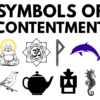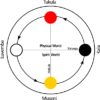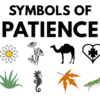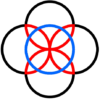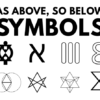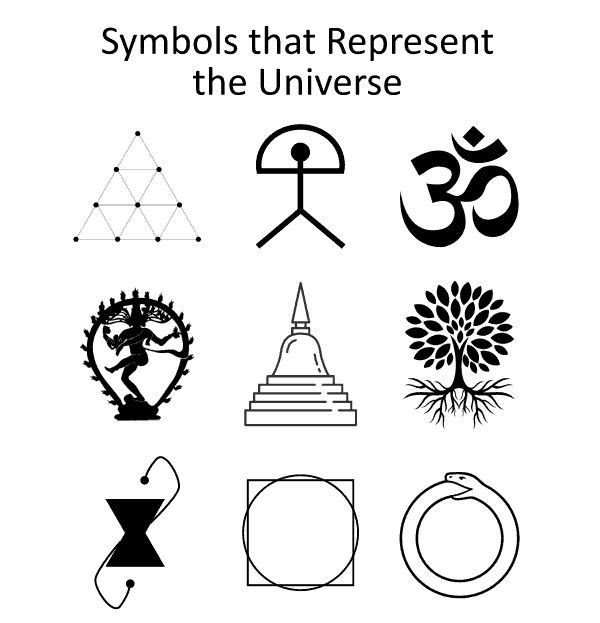
Throughout history, humanity has been captivated by the vastness of the universe, pondering its origins and myriad mysteries. Not surprisingly, ancient civilizations developed powerful symbols to convey their understanding of the universe and humanity’s role within it. Some of these symbols carry profound truths of life and studying them can be an eye opening experience.
In this article, let’s delve into 20 such powerful symbols that have been used to represent the universe throughout history, and explore their deeper meanings, origins, and significance.
20 Symbols that Represent the Universe
1. Tetraktys
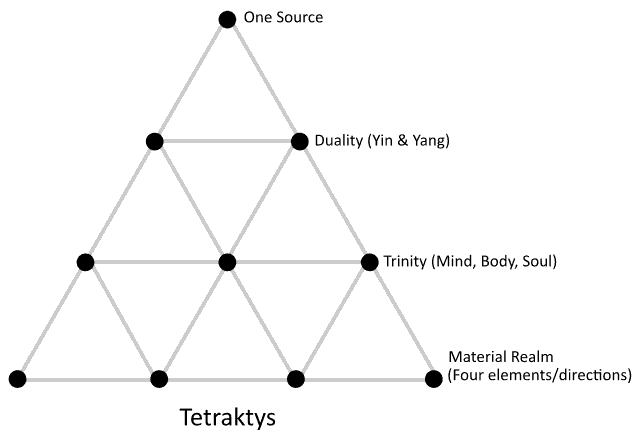
The Tetraktys is a mystical triangular symbol devised by Pythagoras that symbolizes the universe and how it works. The symbol consists of ten dots arranged like a pyramid.
The top dot symbolizes God or the one source from where everything emanates. The following two dots represent the duality of existence (Yin and Yang), while the next three symbolize the trinity of Mind, Body, and Soul, foundational to the material world. Finally, the four base dots represent the material realm and its four cardinal directions, four elements, four seasons, and other aspects of existence.
2. Ouroboros
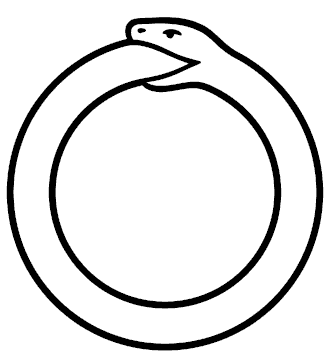
The Ouroboros is an ancient symbol found across many cultures that depicts a snake eating its own tail. As the snake consumes itself, it derives energy, and its body and tail continue to grow. The more it consumes, the more it grows in such a way that the body of the snake remains intact.
The process of eating (its own tail) represents destruction and the process of growing represents creation. The body of the snake that remains intact represents sustenance. Thus, the Ouroboros symbolizes the fundamental workings of the universe—an eternal cycle of creation, sustenance, and destruction.
3. OM (AUM)
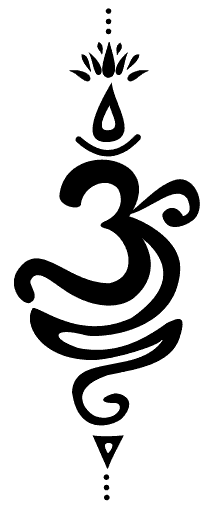
In Hinduism, OM or AUM is considered the primary sound (or vibration) from which the universe originated. The OM sound is believed to be present in everything that exists.
AUM comprises three syllables—Aaa, Ooo, and Umm—which are the three basic sounds from which all other sounds are created. Thus these sounds form the base of everything that exists. These three syllables also symbolize the various trinities of existence including the three states of consciousness – waking, dreaming, and deep sleep and the three cyclical processes – creation, preservation, and destruction. Therefore, OM serves as a profound symbol representing the totality of the universe.
This concept of a divine sound giving birth to the Universe is also reflected in many other faiths. For example, the Bible contains a verse stating, “In the beginning was the Word, and the Word was with God” (John 1:1), reflecting a similar idea of creation through divine utterance.
4. Mandala
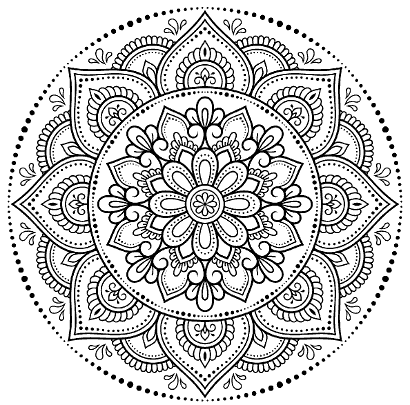
A mandala, meaning “circle” in Sanskrit, is a circular geometric pattern used for spiritual practice, meditation, prayer, and introspection. It is regarded as a mystical map of the universe, symbolizing its totality, infinite nature, completeness, and the concept of oneness and enlightenment.
During meditation, mandalas guide the meditator’s attention from the outer frame to the center and back, representing the cosmic dance of creation and destruction. In addition to using mandalas as a tool to focus on, people also draw mandalas as an exercise for self-discovery, harnessing creative energy, and fostering a connection with the universe.
5. Buddhist Stupas
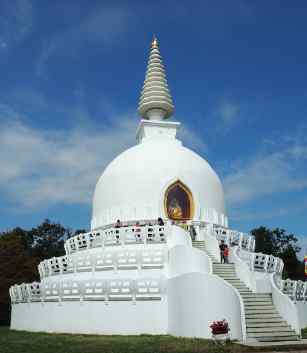
Buddhist stupas are sacred monuments used for worship and meditation. Typically dome-shaped, they symbolize the universe and serve as representations of the enlightened mind of the Buddha.
At the top of a stupa, there’s a structure called the harmika, which houses a central pole known as the Yasti. The Yasti symbolizes the Axis Mundi, the center of the universe, representing the connection between earth and heaven.
6. Vishnu’s Lotus
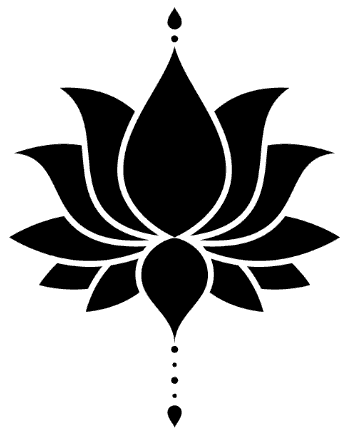
In many cultures across the world, the lotus flower has been equated to the universe.
For instance, in Hinduism, Vishnu, the God responsible for sustaining/preserving the universe, is frequently depicted with a lotus emerging from his navel. Upon this lotus sits Lord Brahma, the God of creation. In this context, the lotus symbolizes the universe, and its stem is regarded as the Axis Mundi, the central pillar upon which the material universe rests.
The lotus continuously thrives and is sustained due to its connection to Vishnu’s navel, which is the center of prana or life energy.
7. Circle

The circle symbolizes the universe in many cultures and belief systems. This can primarily be attributed to the circle’s inherent qualities of completeness, totality, oneness, and infinity.
The circle is unbroken and has no beginning or end, which represents the cyclical and infinite nature of the cosmos. Additionally, the center of the circle signifies the point of origin from which all creation emanates, underscoring the interconnectedness and oneness of the cosmos.
8. Drum or Damaru
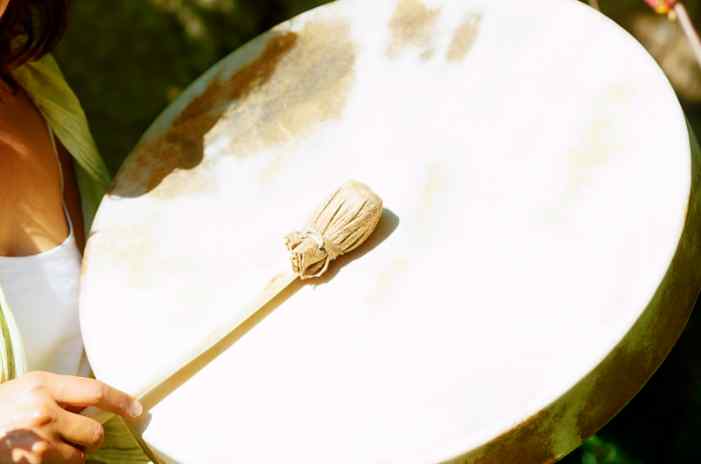
In many ancient cultures, the drum symbolizes the ever-expanding and contrasting dual nature of the universe, as well as the underlying vibration that permeates it.
When played, the drum’s skin expands, collapses, and then re-expands, symbolizing the cyclic process of creation and destruction in the universe.
In Hinduism, the drum (known as damru) is frequently depicted in the hands of Nataraja (Shiva engaged in the cosmic dance), where it represents the sound of creation.
9. Squared circle
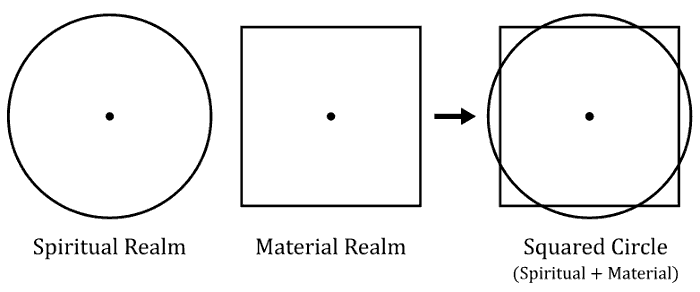
The square, with its rigid frame, symbolizes the material universe, while the fluid nature of the circle represents spirit, consciousness, or the formless universe.
The squared circle, which is an ancient symbol composed of a circle and square of equal area and sharing the same center, serves as a perfect representation of the universe, formed by the union of the material and the spiritual.
10. Nataraja
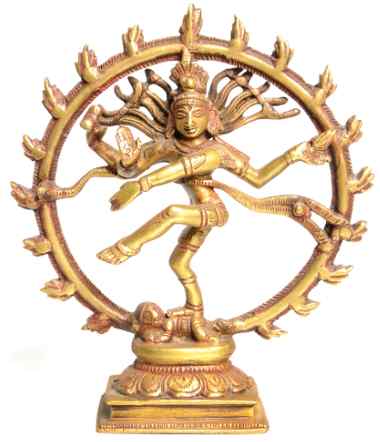
In Hinduism, Natraja is the form of Lord Shiva engaged in the eternal dance of creation and destruction. Shiva holds a drum or damru in his right hand which symbolizes the rhythmic vibrations of creation. He dances to this sound ceaselessly recreating the universe.
In his left hand, he wields a flame, signifying destruction. His raised left foot signifies salvation, while his right foot resting on the demon of ignorance represents enlightenment and liberation from ego.
The statue is often encircled by a ring of flames, representing the eternal and cyclical nature of this cosmic dance.
11. Prayer wheel
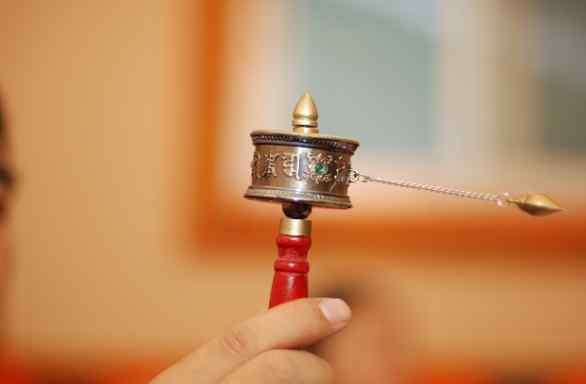
A prayer wheel is a cylindrical device used in Buddhism for prayer and meditation. When spun, it is believed to connect the microcosm (person spinning the wheel) to the macrocosm (god or the universe). The spinning also symbolizes the universe and its eternal cycles.
The spinning is believed to send out prayers and blessings into the universe, signifying interconnectedness, spiritual energy, and the perpetual flow of positive intentions and goodwill.
12. Spiral
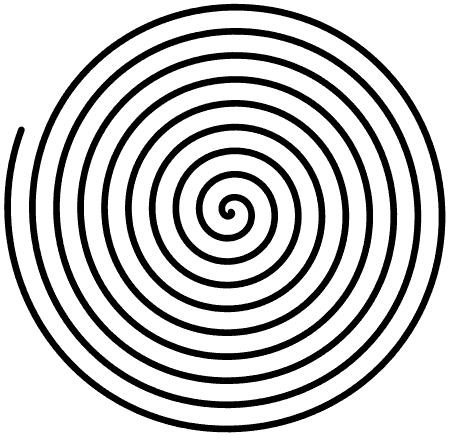
The spiral begins from a single dot and emanates outwards. In many cultures, this dot symbolizes the universe’s origin, while the spiraling circles represent its eternal and cyclic nature.
Additionally, reversing the spiral’s direction—from outside to center—represents returning back to the origin or transitioning from material to spiritual realms. Spirals also embody concepts of infinity, balance, and interconnectedness, reflecting fundamental aspects of the universe.
13. Dharma Chakra
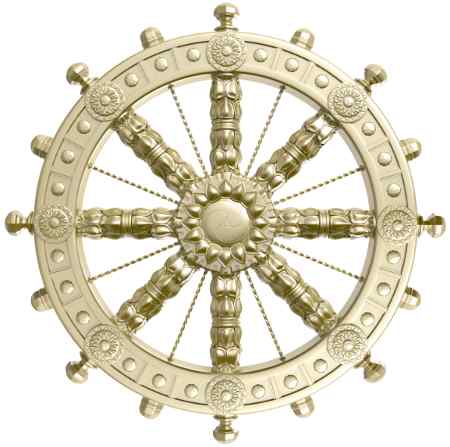
The Dharma Chakra (Dharma Wheel) is a powerful Buddhist and Hindu symbol that represents the universe and its workings. Ancient cultures envisioned the universe as a massive wheel, ceaselessly turning and carrying all within it.
The Dharma Chakra perfectly represents this concept of the cosmic wheel, with its turning symbolizing the eternal cycles of existence: day and night, seasons, creation and destruction, and the cycles of life, death, and rebirth.
At the wheel’s center lies the Axis Mundi, representing the central point of the universe around which all revolves.
14. Platonic Solids
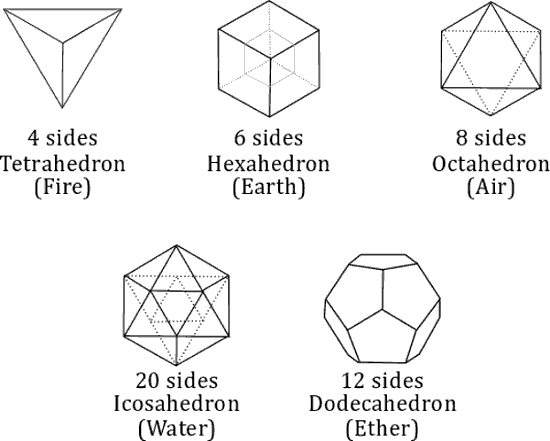
The Platonic solids are 5 sacred geometrical shapes that are believed to be the building blocks of the universe. They include the tetrahedron, cube, octahedron, dodecahedron, and icosahedron.
What sets these solids apart are their distinct characteristics: equilateral faces, equal angles, and identical vertices, symbolizing perfection and harmony.
In various philosophical and mystical traditions, these solids are associated with the five elements that make the material universe: the tetrahedron with fire, the cube with earth, the octahedron with air, the icosahedron with water, and the dodecahedron with consciousness or ether.
Thus the Platonic solids represent the spiritual and material universe and everything within. They also represent interconnectedness, balance, harmony, and perfection.
15. Sacred Geometric Shapes
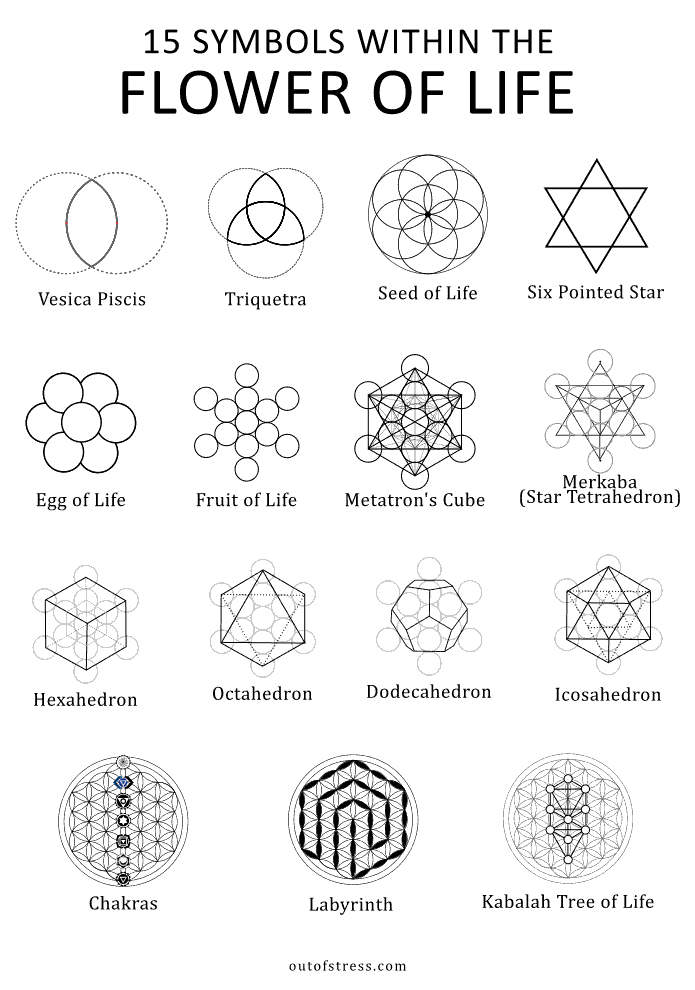
Sacred geometry is a set of symbols that represent the nature, workings and underlying blueprint of the universe.
Sacred geometry unfolds from a single dot, symbolizing the one source of consciousness. The dot gives rise to a circle which represents oneness. One circle becomes two, forming the Vesica Piscis representing duality, two circles become three forming the triquetra representing the various trinities of existence. When we add more circles we get the Seed of Life, the Flower of Life, the Torus, the Egg of Life, the Fruit of Life, and finally, the Metatron’s Cube that houses within it all the five Platonic solids. These solids are believed to be building blocks of the universe (as discussed earlier).
Thus sacred geometrical shapes are a potent representation of the universe and everything in it.
16. Human Body
Many ancient cultures believed that the human body is the perfect representation of the universe and that it contains all its secrets within. This belief stems from the idea that the human body reflects the cosmos in its structure and functions.
For instance, the body’s various systems and organs are seen as mirroring the celestial bodies and natural elements. Additionally, the concept of microcosm and macrocosm suggests that the human body is a miniature version of the universe, with each part interconnected and reflecting the whole.
Thus, by understanding the human body, one can gain insights into the workings of the universe and its mysteries.
17. Tree of Life
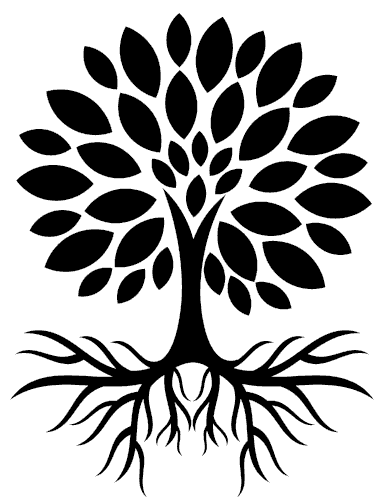
Just like the human body, a tree is also a perfect representation of the universe. The roots of the tree represent the material or earthly plane, while the branches reaching toward the sky symbolize the spiritual realm. Thus the tree represents the interconnectedness between the material and spiritual realms that is the basis of all existence.
Additionally, trees reflect the cyclic nature of the universe, as their leaves dry and flourish with changing seasons. The trunk of the tree represents the Axis Mundi or central point on which the material universe (represented by the branches and leaves) rests.
In-fact, many ancient beliefs often spoke of a tree located at the center of the earth that aligns with the Axis Mundi or central point of the universe.
18. Yin Yang
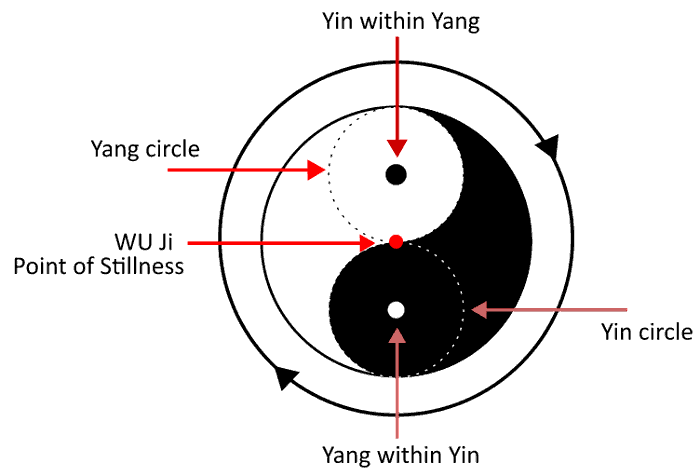
The Yin Yang is an ancient Taoist symbol that perfectly illustrates the workings of the universe. The symbol consists of a circle divided into two equal parts (one black and the other white) by a curved line, with each half containing a smaller circle of the opposite color. This visually represents the interplay of opposing forces within the universe.
The black section, Yin, represents darkness, femininity, passivity, and the moon, while the white section, Yang, symbolizes light, masculinity, activity, and the sun. The two halves are interconnected and interdependent, illustrating that within darkness lies a seed of light, and within light lies a seed of darkness.
This concept reflects the dynamic nature of the universe, where equilibrium is achieved through the constant interaction and transformation of these opposing forces. Just as day turns to night and winter gives way to spring, Yin transforms into Yang and vice versa, illustrating the cyclical nature of existence and the interconnectedness of all phenomena.
Thus, the Yin Yang symbol serves as a visual representation of the cosmic order and the interconnectedness of all things in the universe.
There are many other symbols similar to the Yin Yang that convey a similar concept. Some of them include the six-pointed star, the 8-pointed star, Vesica Piscis, and more.
19. Indalo
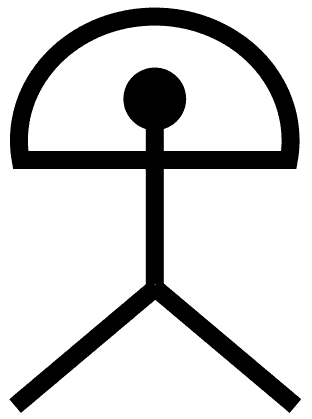
Indalo is a prehistoric symbol found in the caves of southern Spain, often associated with protection and harmony. It is believed to represent the universe through its simple but profound design, which features a stick figure with outstretched arms. The arms of the Indalo form a semi-circle or arch, resembling the shape of the universe. This symbol is thought to symbolize the connection between humanity and the cosmos, emphasizing balance, unity, and the harmonious interaction between the individual and the universe.
20. Eggs
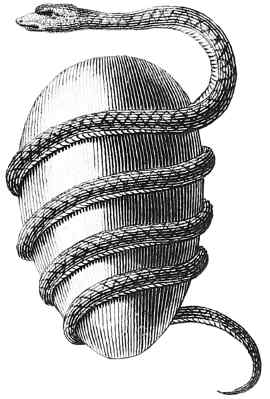
Eggs are a potent symbol of the universe and how it came about. In various ancient cultures including the Celts, Hindus, Egyptians, Japanese, Babylonians, and Greeks, it is believed that the universe came out of a giant egg.
For instance, in Hinduism there is the concept of the cosmic egg that was floating around in emptiness before breaking into two halves – one half became heaven and the other earth. The egg also is believed to have given birth to Brahma – the God of Creation. In Fact The Sanskrit word for the universe, “Brahmanda,” is derived from “Brahma” and “Anda (meaning egg),” which translates to Egg of Brahma.
Similarly, ancient Greeks envisioned the universe originating from a primordial egg, giving birth to Phanes, the first deity, who then created the other gods. Egyptians believed that Sun God Ra emerged from the cosmic egg and went across the sky dispelling darkness and bringing about light and life.
Some cultures even believe that the universe itself is contained within a giant egg.
Conclusion
The symbols listed here are among the most powerful representations of our mystical and mysterious universe. Some of these symbols capture the very essence of how the universe works and contemplating them can help you gain valuable insights and open your mind to many hidden secrets.


